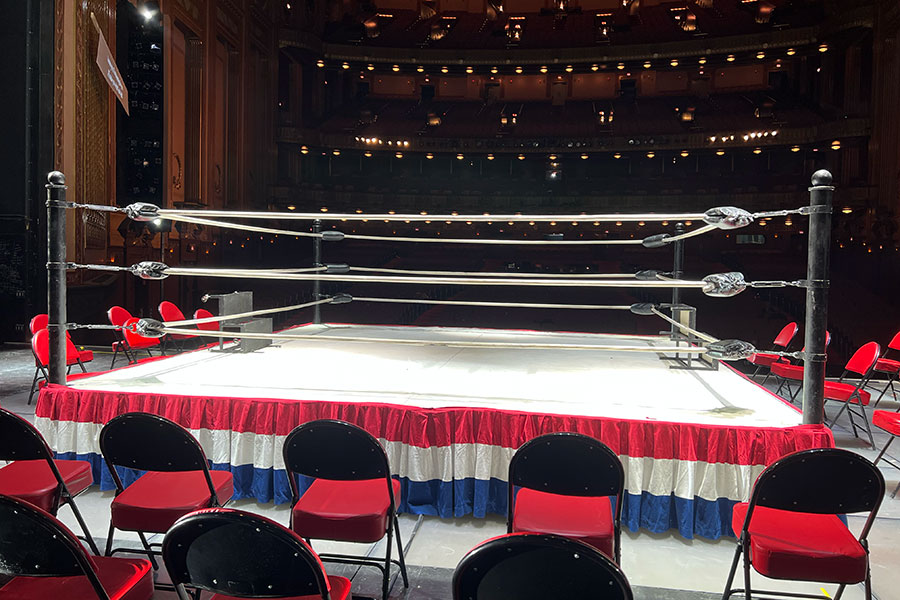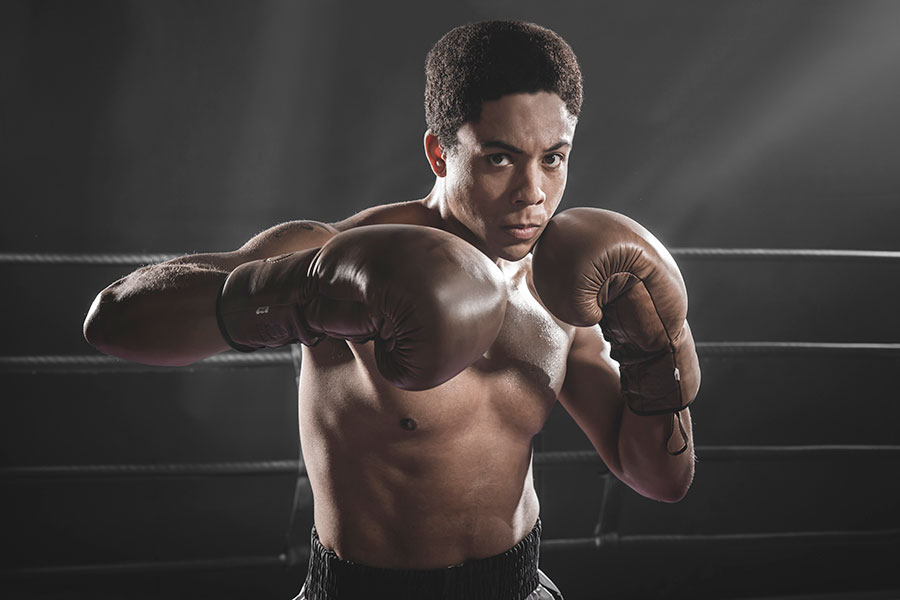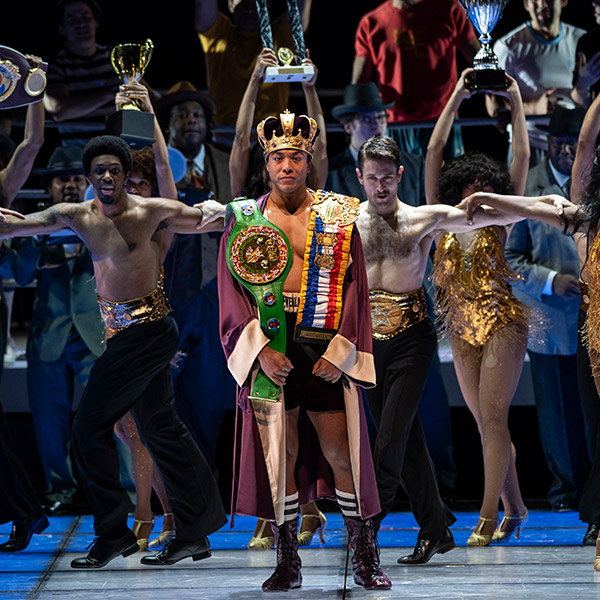January 05, 2024
Making a man
In its multilayered portrait of Emile Griffith, Champion illuminates complex aspects of Black fame and identity.
Born in the U.S. Virgin Islands, boxer Emile Griffith (1938-2013) made it to the "big time" in a generation when Black people garnered the most praise in the mainstream press as either athletes or entertainers. He gained popularity in the thick of the Jim Crow era — a time of inequitable application of the G.I. Bill for Black soldiers returning after WWII, increased red lining against Black home buyers, and Sundown Towns, among innumerable other indignities. With Champion, composer Terence Blanchard and librettist Michael Cristofer have devised a work that weaves together the contrasting realities of the hope and disappointment that surrounded Griffith's career. The work presents a portrait of his public persona juxtaposed with his inner private life. In Champion we see how Blackness, boxing, and manhood can unexpectedly, and eloquently, be expressed in the expansive genre of opera.

The boxing ring in Champion, onstage at Lyric Opera of Chicago.
Blanchard and Cristofer showcase the arena of the boxing ring as a microcosm for the brutality and sensitivity, anticipation and hope in Griffith's story. The narrative centerpiece is the time before and leading up to his third and final fight with Afro-Cuban Benny "Kid" Paret (1937-1962), which led to harrowing results as Paret was knocked out, went into a coma, and then died 10 days later. Yet the action also encompasses years before, and decades after, the fight. In an innovative operatic technique achieved through layered staging and musical textures, we get a multi-tiered presentation of this story all at once. Through a trio of singers, we see Griffith at three stages of his life: Little Emile (as a young boy), Young Emile (in his major years as a boxer), and an older Emile (nearing the end of his life). As the three Emiles overlap with each other, we take in a story that feels at once tragically timeless and intimately present.
Near the midpoint of the opera, just before the depiction of the fight that would shade his career, Emile reflects on the slur that Paret has just whispered to him regarding his sexuality. Alone on stage, Emile ruminates as he queries "What Makes a Man a Man?" In an undulating line that starts high, dips down, and then keeps reaching up to recover, Emile hunts for the answer. He looks inside and outside of who he is, "the skin he wears," "the color of his voice," "the walk he walks," and the way he talks. Through such soul searching we share this private pivotal moment and see Emile both as a man, and a boxer — a person who encompasses aching vulnerability and a competitor who participates in an aggressive dangerous sport.
In the next scene, the finale of Act 1, we see the big fight. Highly anticipated when it took place in Madison Square Garden on March 24, 1962, it was meant to be the decisive match between Griffith and Paret. Each had previously beaten the other, and a central question was whether Griffith could win back the welterweight title he had taken from Paret in their first bout, a belt that Paret had then won back in their second encounter.

Baritone Justin Austin plays the lead role in Champion at Lyric.
The whole cast is at the fight — Paret, his opponent; Howie Albert, his trainer; Emelda Griffith, his mother; the Ring Announcer; and the chorus of Reporters and Photographers. Additionally, we have Kathy Hagen, the bar owner, and several Drag Queens who patronize Hagen's gay bar. Also at the fight, as though coming from inside the fighter's head as a projection of his future self, we have older Emile punctuating the scene, guiding the audience through the bifurcated vision of what is happening. Both in the present for boxer Emile, and in the past of older Emile's memory, this seminal bout becomes a twofold dramaturgical moment in time for the opera house audience. As we enter the world of the opera, we watch the present collide with the past in a charged sensibility. We return to a moment more than 60 years prior that haunted Emile Griffith to the end of his life, and became indelible in the larger history of boxing.
In the bookends of the opera — the opening and closing scenes — we see older Emile, the boxing champion who at various points in his career held world welterweight and middleweight titles. He is suffering from pugilistic dementia and the effects of a severe beating outside a gay nightclub in 1992. As a metaphor for the double vision of our perceptions of heroes and champions, older Emile sings about a single shoe, left without its match, wondering where it belongs.
In its unlikely pairing of the arts and sport, Champion gives us a glimpse of the stories of Griffith and Paret and their professional and familial communities. We begin to feel some of the fame, horror, accomplishment, and violence that surrounded them both inside the ring and out. Their names are part of the history of Black honor and celebrity. Even today, most people can more easily list five Black athletes and entertainers before naming even one or two Black Nobel laureates, CEOs, professors, doctors, members of congress, or judges. We need all of these names in the pantheon. In showing the contours of what made some of these historic figures both human and real — and literally multi-dimensional — Champion provides its own kind of revelatory reckoning.
Naomi André is the David G. Frey Distinguished Professor in the Department of Music at UNC-Chapel Hill and Professor Emerita at the University of Michigan. Her publications include the books Black Opera: History, Power, Engagement and Voicing Gender: Castrati, Travesti, and the Second Woman in Early Nineteenth-Century Italian Opera.

